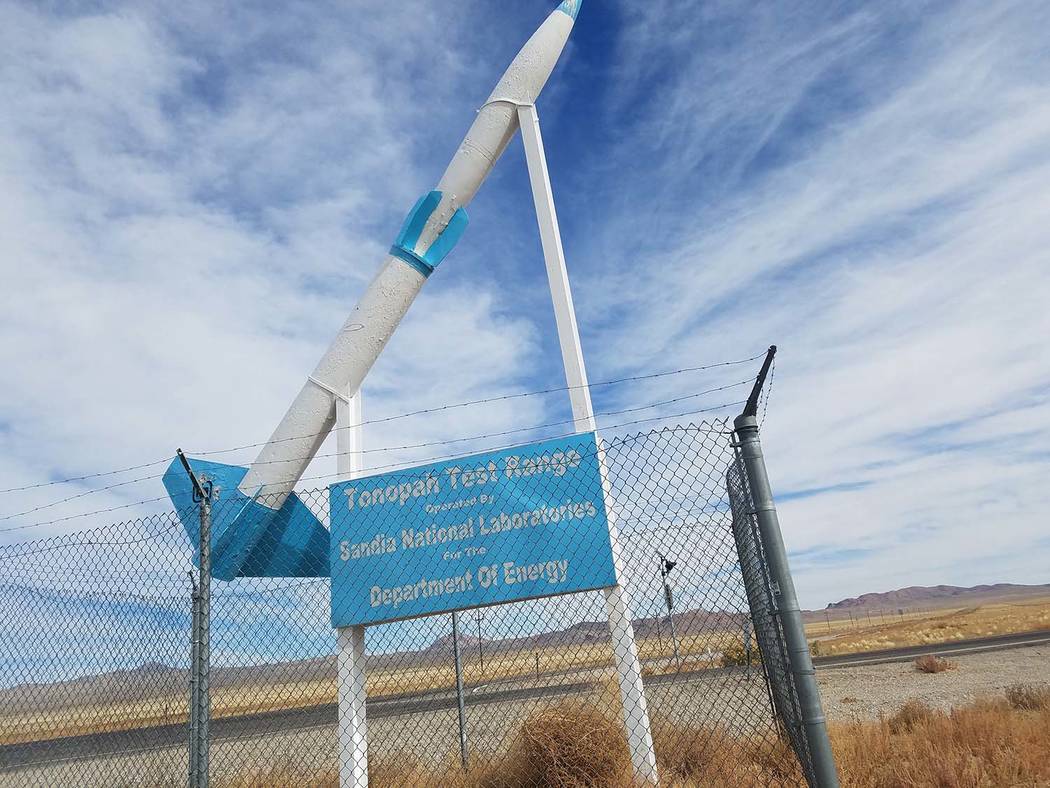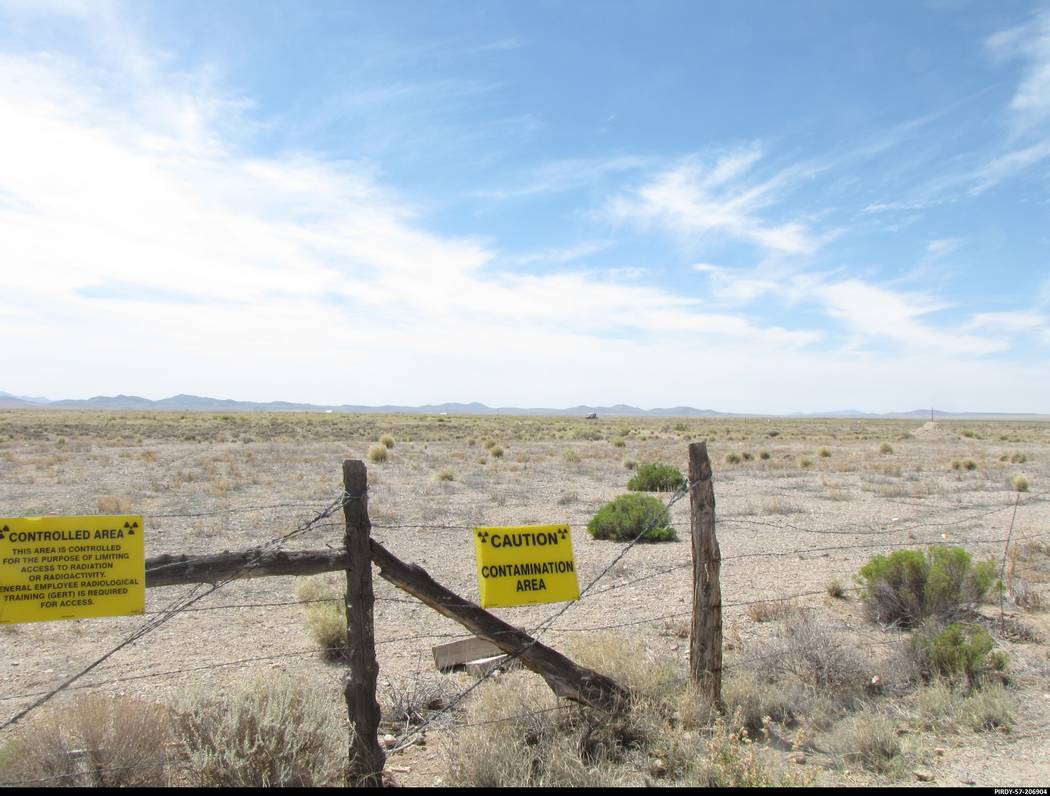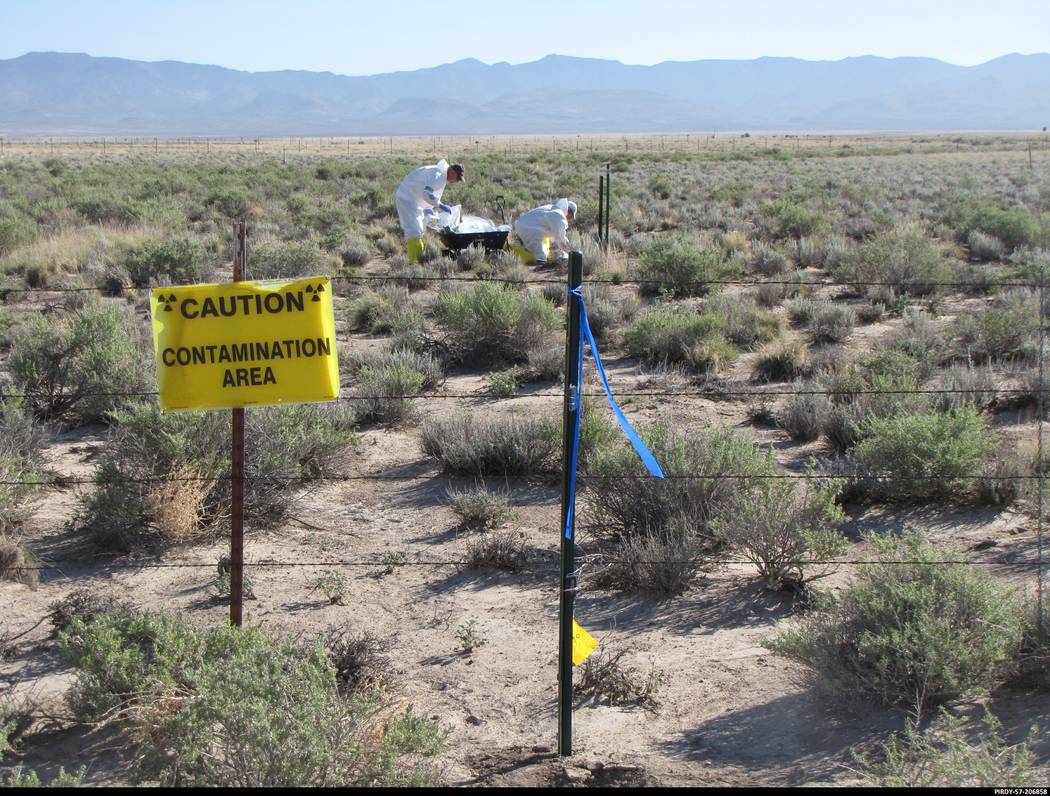Project is set to clean up Tonopah Test Range
The U.S. Department of Energy will remove 5,000 cubic feet of low-level waste from the Tonopah Test Range as part of the clean-up effort, officials said.
The soil at the Tonopah Test Range was contaminated by plutonium after operation Clean Slate II experiments were designed to determine if nuclear weapons could be accidentally set off and produce a nuclear yield.
Kelly Snyder, public affairs specialist for the DOE said after clean-up activities, contamination levels will be such that a construction worker performing work within the site for a full year will receive a dose less than 25 millirem per year which is equivalent to one chest X-ray per year.
Officials said most of the plutonium contamination at the Clean Slate II site is at the surface or within five centimeters of the surface, however, some potentially contaminated debris is buried at an estimated depth of one meter.
“Although residual amounts of plutonium will still be dispersed in the soil at these areas, the remediation work will remove the higher contamination areas at Clean Slate II,” Snyder said.
The Energy Department’s environmental management Nevada Program has conducted clean-up activities at the Tonopah Test Range since 1996. In the late 1990s, approximately 7,400 cubic yards of radioactive contaminated material was removed and disposed at the Nevada Test Site now known as the Nevada National Security Site.
According to the DOE’s presentation, the material is only hazardous if inhaled or ingested because alpha-emitting radioactive particles cannot penetrate the human skin.
“Radiation from plutonium is hazardous only if inhaled or ingested,” Snyder said. “It loses energy very rapidly and has a low penetrating ability – it cannot penetrate skin, or even a sheet of paper. However, if it is inhaled or ingested, the alpha radiation can cause harm to individual cells or organs, depending on factors such as quantity inhaled/ingested, cell sensitivity, and the individual.”
Transportation of waste
Remediation at the site is planned for June and shipments are anticipated to begin in July, DOE said. The planned 15-week shipping campaign will have five trucks per day, four days per week.
The soil and debris collected from the site will be sealed in containers, loaded onto placarded trucks and transported from the Tonopah Test Range along U.S. Highway 95 to the Nevada National Security Site Area 5 Radioactive Waste Management Site, where it will be permanently disposed.
According to the information provided by the DOE, it hosted several training classes and exercises for local responders to ensure emergency responders are prepared in an event of an incident involving any shipments to the Nevada National Security Site.
According to DOE, close to 100 emergency responders live in communities along U.S. Highway 95 trained by the DOE Transportation Emergency Preparedness Program.
In addition to local responders, numerous high-tech resources and emergency response personnel are stationed at the NNSS which has agreements in place to support nearby communities, DOE said in a presentation.
History
DOE’s predecessor agency, Atomic Energy Commission, began testing weapon systems, research rockets, and artillery on Tonopah Test Range in 1956.
Some tests involved conventional explosive detonations of nuclear devices that produced no yield but resulted in radioactive and chemical contamination of the environment, according to the presentation.
DOE and the Department of Defense currently carry out missions on the Tonopah Test Range, officials said. The locations where historic nuclear weapons tests took place limits the current type of work that can be completed in the area due to residual contamination.
“Continued remediation activity will allow for additional land to be used for ongoing missions. In addition, all current activities meet strict environmental regulations,” officials said.
Tonopah Test Range is about 50 miles southeast of Tonopah.
Contact reporter Daria Sokolova at dsokolova@pvtimes.com. On Twitter: @dariasokolova77


















